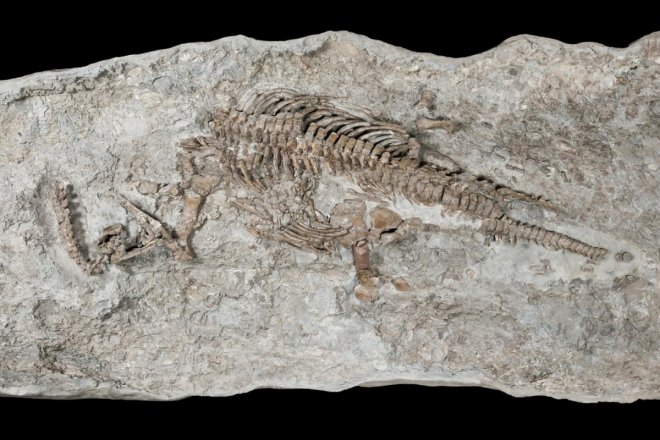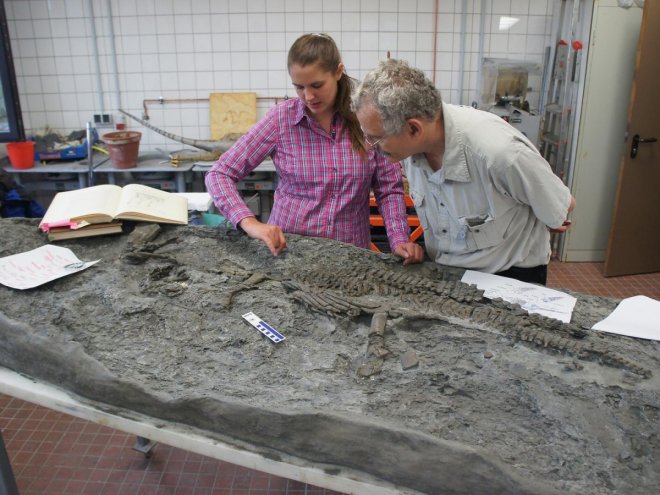
According to scientists, plesiosaurs were known as effective swimmers. This oldest sea-dwelling species, which emerged 50 million years ago, used to propel themselves through the world's oceans like penguins and sea turtle.
The ancient reptile's skeleton was found near the village of Bonenburg, Germany. Two German researchers along with their colleagues from Japan and France have published their findings in a journal Science Advances.
In 2013, Michael Mertens, who first saw the specimen during quarrying operations at a clay pit in Westphalia, Germany referred it to experts and an analysis by LWL-Museum für Naturkunde in Münster revealed that the fossil is a marine reptile from the Triassic period which occurred between 251 million and 199 million years ago.
When Prof. Martin Sander from the Steinmann Institute of Geology, Mineralogy and Paleontology of the University of Bonn heard about the ancient fossil finding, he said, "I could not believe that there was a plesiosaur from the Triassic, given that these animals had been studied by paleontologist for nearly 300 years, and never was there one older than Jurassic."

However, a detailed research by Ph.D. student Tanja Wintrich of the Steinmann Institute of the University of Bonn showed that the 23-cm long skeleton actually represents the oldest plesiosaur.
Even scientists from Osaka Natural History Museum, the University of Osaka, the University of Tokyo and the Paris Natural History Museum joined the research to study the bone samples.
Sander said, "Plesiosaurs apparently grew extremely fast before reaching sexual maturity." Paleontologists also confirmed that these ancient reptiles were warmblooded and could "regulate their body temperature to be able to invade cooler parts of the ocean."
According to Sander, at the end of the Cretaceous, "a meteorite impact together with volcanic eruptions led to an ecosystem collapse, of which plesiosaurs were prominent victims."









